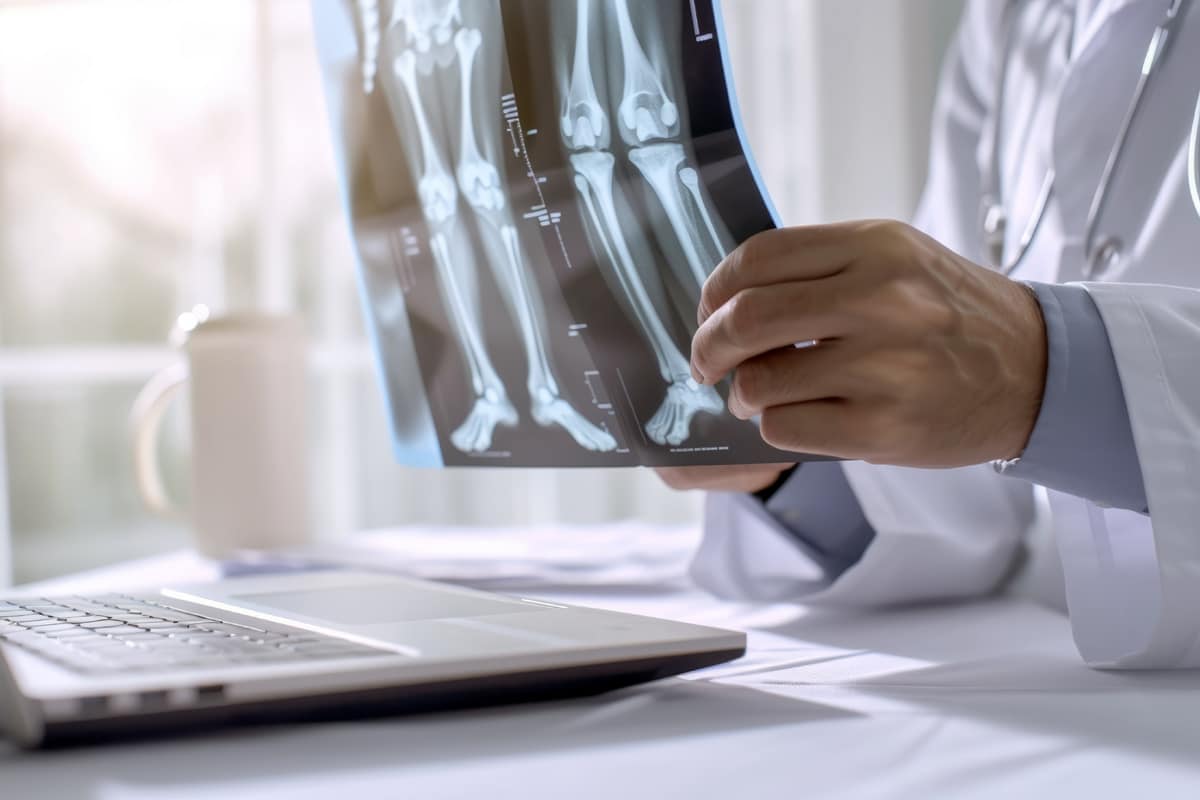Orthopedic health, encompassing the condition of our bones, joints, ligaments, and muscles, plays a pivotal role in our overall well-being and our ability to lead an active life. While it is common knowledge that orthopedic health is crucial, the depth of its impact often remains under-explored. We invite you to engage in a comprehensive discussion on this topic, aiming to shed light on the notable implications of orthopedic health, common conditions affecting it, and its influence on various age groups. Let us jointly unravel the significance of maintaining good orthopedic health.
Understanding Orthopedic Health
Grasping the fundamental concept of orthopedic health, a comprehensive realm encompassing the care and treatment of the body’s musculoskeletal system, is pivotal to understand its overall importance for maintaining physical wellbeing and mobility. It’s a discipline that has benefited immensely from orthopedic technology advancements. These advancements have not only transformed diagnoses and treatments but also ushered in a new era of minimally invasive surgeries and rehabilitative methods, significantly improving patient outcomes and recovery times.
However, despite these advancements, orthopedic health misconceptions persist. One common misconception is that orthopedic care solely addresses sports injuries or conditions affecting the elderly. While these are indeed significant aspects, orthopedic health extends beyond these realms, playing a critical role in treating congenital disorders, degenerative diseases, and musculoskeletal injuries across all age groups. Another misconception is that surgery is the primary or only solution. While surgery can be an effective treatment method, many conditions can be managed or even resolved through non-surgical interventions such as physical therapy, medication, or lifestyle modification. These misconceptions underscore the need for enhanced public awareness and education about the broad scope and capabilities of orthopedic health care.
The Musculoskeletal System’s Role
Building on this understanding of orthopedic health, it’s essential to recognize the indispensable role that the musculoskeletal system plays in our overall health and wellbeing. This intricate network of bones, muscles, ligaments, tendons, and joints provides the framework that supports our body structure, allowing movement and physical activity.
The musculoskeletal system evolution has been an integral part of human development. Over centuries, our musculoskeletal system has evolved to become more efficient and adaptive, enabling us to perform complex activities that set us apart from other species. This evolution has not only improved our mobility but also significantly enhanced the system’s disease resistance.
Understanding the musculoskeletal system’s disease resistance is crucial in appreciating the system’s role in maintaining health. This system is our first line of defense against physical injuries and diseases, providing protection to our vital organs. It also plays a pivotal role in our immune response, with bone marrow producing the majority of our body’s white blood cells, the soldiers of our immune system.
Common Orthopedic Conditions
Turning our attention to the common orthopedic conditions, it is crucial to identify these disorders accurately, as early detection can significantly impact the course of treatment and recovery. A comprehensive understanding of such conditions will aid in their effective management, including appropriate treatment strategies and preventive measures. Through this discussion, we aim to provide a thorough overview of common orthopedic disorders, their treatments, and methods of prevention.
Identifying Orthopedic Disorders
Understanding the spectrum of common orthopedic disorders is crucial in order to effectively diagnose and treat these conditions that have a significant impact on the physical health of individuals worldwide. Genetic predispositions play a key role in the onset of many of these disorders, including osteoarthritis and rheumatoid arthritis, thus making early identification and intervention paramount. Advancements in orthopedic innovations have allowed for more accurate diagnoses, presenting a broader understanding of these disorders. These innovations, including advanced imaging technologies and genetics research, have greatly enhanced our ability to identify both the common and rare orthopedic conditions. Accurate identification is the first crucial step towards managing these disorders and mitigating their impact on the quality of life.
Treatment and Prevention
After accurate identification of orthopedic disorders, the subsequent step involves an array of treatment protocols and preventive strategies tailored to manage and curb the progression of these common conditions. Recent surgical advancements have significantly improved the prognosis of conditions such as osteoarthritis and spinal disorders. These cutting-edge techniques now permit minimally invasive procedures, which reduce pain and speed up recovery. Concurrently, preventive strategies like regular exercise, dietary modifications, and weight management are emphasized. Furthermore, alternative therapies such as acupuncture, massage, and chiropractic adjustments have gained popularity for their role in relieving pain and improving function. It is crucial that these treatments and preventive measures are appropriately selected and employed for each patient to optimise orthopedic health.
Impact of Poor Orthopedic Health
Compromising orthopedic health can lead to severe health implications, encompassing not only physical discomfort and limited mobility but also indirect impacts on overall wellness and quality of life. One of the most significant orthopedic health misconceptions is the notion that pain or physical limitations are an inevitable part of aging. This misconception may lead to neglect of early symptoms and delay in seeking necessary medical assistance, thereby exacerbating the condition.
The consequences of a sedentary lifestyle are another major factor contributing to poor orthopedic health. Extended periods of inactivity can cause muscle weakness, joint stiffness, and bone density loss, leading to a heightened risk of fractures and other orthopedic issues. Additionally, a sedentary lifestyle can lead to weight gain, increasing the stress on joints, particularly the knees and hips, and potentially leading to conditions such as osteoarthritis.
Furthermore, poor orthopedic health can indirectly affect other aspects of wellness. Chronic pain from orthopedic conditions can disrupt sleep patterns, reduce physical activity, and lead to mental health issues like depression or anxiety. In conclusion, maintaining orthopedic health is a crucial aspect of overall health and well-being.
Benefits of Good Orthopedic Health
Maintaining optimal orthopedic health yields a myriad of benefits, ranging from enhanced mobility to improved overall well-being. Good orthopedic health is often a testament to a well-protected and nurtured musculoskeletal system, which is essential for living an active, unrestricted life.
- Enhanced Mobility: Good orthopedic health allows for better movement, flexibility, strength, and coordination, which in turn improves quality of life. This can be further facilitated with the use of orthopedic footwear, which supports and aligns the feet and ankles.
- Pain Reduction: A healthy musculoskeletal system drastically reduces the occurrence of pain in joints, bones, muscles, ligaments, tendons, and nerves.
- Improved Sleep: Sleep’s impact on orthopedic health is significant. Quality sleep aids the body’s healing and regeneration processes, contributing to optimal orthopedic health.
- Increased Productivity: With enhanced mobility and less pain, individuals are more productive in their personal and professional lives. They can engage in activities they love without discomfort or restrictions.
Injury Prevention Strategies
In the context of orthopedic health, injury prevention strategies are crucial to maintaining optimal functionality and avoiding unnecessary afflictions. Particularly, the implementation of effective exercise regimens and the adoption of safe sporting practices can significantly reduce the risk of orthopedic injuries. A comprehensive understanding of these strategies will provide individuals with the requisite knowledge to sustain their orthopedic health, thereby enhancing their overall well-being.

Effective Exercise Regimens
To safeguard against potential injuries, it is crucial to adopt effective exercise regimens that focus on enhancing overall orthopedic health.
- Workplace Ergonomics: Regular breaks from sitting and practicing proper posture can help prevent musculoskeletal issues.
- Yoga Benefits: Yoga can improve flexibility, balance, and strength, reducing the risk of orthopedic injuries.
- Strength Training: Regular strength training helps build muscle that supports and protects joints and bones.
- Aerobic Exercise: Physical activities such as walking, swimming, or cycling, can help maintain overall bone health.
Safe Sporting Practices
Building upon the foundation of effective exercise regimens, safe sporting practices serve as an additional layer of protection, playing a significant role in the prevention of orthopedic injuries. Equipment safety is paramount in minimizing risk exposure, demanding meticulous standards for both use and maintenance. Protective gear should be appropriate for the specific sport, fitting correctly and meeting the required safety standards.
Furthermore, coaching techniques also contribute to orthopedic health. Coaches should be adept at teaching correct form and techniques, which can drastically reduce the possibility of injury. It is essential they also understand how to respond to injuries if they occur, promoting rapid and safe recovery. Incorporating these elements into sporting practices ensures a safer, healthier engagement in sports, thereby enhancing orthopedic health.
Role of Physical Activity
Regular physical activity plays a pivotal role in maintaining and enhancing orthopedic health by strengthening muscles, improving joint flexibility, and promoting bone density. This can lead to significant posture correction and mobility improvements, thereby reducing the risk of orthopedic complications.
Physical activity contributes to orthopedic health in four key ways:
- Muscle Strengthening: Regular exercise, especially resistance training, enhances muscle strength, providing better support for joints and reducing the risk of injury.
- Joint Flexibility: Activities such as yoga, pilates, and stretching exercises improve joint flexibility and range of motion, crucial for maintaining mobility and preventing stiffness.
- Bone Density: Weight-bearing activities like walking, running, and weightlifting promote bone density, reducing the risk of osteoporosis and fractures.
- Posture and Mobility: Regular physical activity corrects poor posture, which is a common cause of back, neck, and shoulder pain. Moreover, it improves overall mobility, a significant factor in maintaining independence as we age.
Incorporating a regular exercise regimen into one’s lifestyle can make a significant difference in orthopedic health. However, it’s crucial to remember that this should be complemented by other lifestyle factors, such as a balanced diet and regular check-ups with a healthcare provider.
Importance of Balanced Diet
While physical activity is unquestionably vital for orthopedic health, an equally significant component is adhering to a balanced diet, which provides essential nutrients for bone, muscle, and joint health. Nutritional supplementation can play a vital role in bridging gaps in diets that might be deficient in crucial nutrients such as calcium, Vitamin D, and protein, which are paramount for maintaining strong and healthy bones and muscles.
However, it is crucial to remember that supplements should not replace a balanced diet but should be used to complement it. Consuming a wide variety of nutrient-dense foods such as whole grains, lean proteins, fruits, vegetables, and dairy products is imperative for optimal orthopedic health.
Dietary restrictions may also be necessary for individuals with specific health conditions, allergies, or intolerances. Such restrictions should always be implemented under the guidance of a healthcare professional to ensure nutritional needs are met without compromising orthopedic health.
Role of Regular Check-ups
Regular check-ups play a critical role in orthopedic health, acting as a key preventive measure to detect early signs of potential issues. Understanding the importance of these check-ups can significantly aid in maintaining and improving overall musculoskeletal wellness. Therefore, the subsequent discussion will focus on the preventive measures in orthopedics and the significance of regular check-ups in this context.
Preventive Measures in Orthopedics
Emphasizing the pivotal role of routine orthopedic check-ups, they serve as an effective preventive measure in maintaining optimal bone and joint health. These regular assessments could alert you to potential issues before they escalate, promoting early intervention and treatment.
- The use of Orthopedic footwear offers numerous benefits. It provides the correct support, alignment, and balance for your feet, reducing the risk of injuries and improving mobility.
- Practicing Orthopedic workplace ergonomics can prevent musculoskeletal disorders. Ergonomic interventions like adjusting workstations, promoting regular breaks, and encouraging correct posture can significantly reduce the risk of developing orthopedic issues.
- Regular physical activities and exercises strengthen muscles around the joints, reducing strain and pressure on them.
- A balanced diet enriched in calcium and Vitamin D helps maintain robust bone health, effectively preventing orthopedic issues.
Understanding Check-up Importance
Having outlined several preventive measures in the realm of orthopedics, it becomes essential to underscore the significance of regular orthopedic check-ups in maintaining overall musculoskeletal health. Regular examinations enable early detection of potential issues, preventing long-term damage and painful complications. Advancements in orthopedic innovations have made it possible to diagnose and treat conditions earlier and more efficiently. Regular check-ups also allow doctors to monitor the effectiveness of implemented rehabilitation methods and adjust treatment plans accordingly. This proactive approach contributes to better health outcomes. Indeed, embracing the role of regular check-ups is not just about preventing orthopedic disorders. It is about prioritizing holistic health, fostering resilience, and ensuring a better quality of life.

Orthopedic Health and Aging
As individuals age, the maintenance of orthopedic health becomes an increasingly critical aspect of overall wellness, often requiring focused attention and proactive measures. Aging genetics and senior mobility are two significant factors that influence the state of orthopedic health in older individuals.
Understanding the complex relationship between orthopedic health and aging involves consideration of the following four aspects:
- Aging Genetics: The genetic makeup of an individual can predispose them to certain orthopedic conditions such as osteoarthritis or osteoporosis. As age advances, the manifestation of these conditions can become more pronounced.
- Senior Mobility: With age, mobility can be hampered due to weakening muscles, diminished flexibility, and joint-related issues. Regular, appropriate exercise can help maintain musculoskeletal strength and joint flexibility.
- Diet and Nutrition: A balanced diet rich in calcium and vitamin D is essential to maintain bone health. Adequate hydration is also necessary to prevent joint and muscle stiffness.
- Regular Check-ups: Regular orthopedic health check-ups can detect potential issues early, enabling timely intervention and treatment.
Orthopedic Health for Children
Just as with aging individuals, orthopedic health is a crucial aspect of a child’s overall wellness, necessitating early attention and preventative measures. Children’s orthopedic health is multifaceted, involving the growth and development of bones, joints, and muscles, all of which require meticulous care and management.
One essential component of pediatric orthopedic health is growth monitoring. This process involves the routine assessment of a child’s physical development to ensure they’re growing at a healthy and appropriate rate. Any significant deviations from standard growth patterns can indicate underlying orthopedic issues, such as abnormal bone development or growth plate injuries.
Additionally, pediatric posture is a fundamental aspect of orthopedic health, often overlooked in children. Incorrect posture can lead to misalignment of the spine and other orthopedic complications, such as scoliosis. Training children to maintain a good posture can help prevent these issues and contribute to optimal orthopedic health.
Tips for Maintaining Orthopedic Health
Building on the foundation of understanding orthopedic health in children, it is equally critical to delve into practical strategies that individuals of all ages can implement to maintain and enhance their orthopedic health. A solid orthopedic health regimen should focus on critical areas such as bone density and joint lubrication, among others.
Follow these four key practices:
- Regular Exercise: Regular physical activity helps to increase bone density and strength. Weight-bearing exercises such as walking, jogging, or weightlifting can be particularly beneficial.
- Balanced Diet: A diet rich in calcium and vitamin D can significantly contribute to bone health. Dairy products, leafy greens, and fortified foods are excellent sources.
- Stay Hydrated: Hydration plays a crucial role in joint lubrication. Drinking enough water helps to keep the joints flexible and reduce friction, thus preventing joint pain and disorders.
- Regular Check-ups: Regular orthopedic check-ups can help in early detection and prevention of potential orthopedic issues. It is advisable to seek professional advice in case of persistent joint pain or discomfort.
Frequently Asked Questions
What Are the Career Opportunities in the Field of Orthopedics?
The field of orthopedics offers a diverse range of career opportunities, including specialized surgeons, therapists, and researchers. Orthopedic education opens doors to various specialization choices, adapting to evolving needs and advancements in medical technology.
How Does Climate Change or Weather Affect Orthopedic Health?
Climate change impacts orthopedic health by exacerbating conditions like Climate Induced Arthritis. Weather variations significantly affect bone density, potentially leading to increased fractures and other orthopedic issues. Hence, environmental conditions are critical to orthopedic health.
Are There Specific Breeds of Animals That Are More Prone to Orthopedic Issues?
Yes, certain animal breeds have genetic predispositions to orthopedic issues. For instance, large dog breeds often suffer from hip dysplasia. Preventative measures, like regular exercise and balanced diet, can mitigate these risks.
How Has the COVID-19 Pandemic Influenced Orthopedic Health Globally?
The COVID-19 pandemic has globally influenced orthopedic health due to increased sedentary behavior. Telehealth in orthopedics has emerged as a viable solution to ensure continuity of care amid social distancing measures.
Can Technological Advancements Like AI and Robotics Help in Improving Orthopedic Health?
Yes, technological advancements like AI and robotics can significantly enhance orthopedic health. AI can improve diagnostic accuracy, while robotics may offer precision in surgeries, despite potential drawbacks such as high costs and technical complexities.

